
Edward Winter

Which chess author wrote a book on ghosts?
The answer is P.W. Sergeant, whose 288-page volume Historic British Ghosts was published by Hutchinson & Co., London in 1936. Chess received a mention on page 262, with the following footnote regarding poltergeists:
‘I have only come across one alleged instance, very trivial. A well-known chessmaster among my friends appeared to be troubled at one time with such a visitant. The books on chess in his library would be found lying on the floor, would fall out of the shelves at night; always and only chess books, though there were more books on other subjects. And a photograph of some chess celebrity fell from the wall, with its glass broken. There was no explanation. A selective cat could hardly be blamed. The manifestation did not last for more than a very few weeks.’

(3162)

Dangerous Game by William Harris, a 70-page paperback in the ‘Penguin Readers’ series, is available in a pack with two audio cassettes. So well performed is the (integral and leisurely) reading that it may often be forgotten that the text has been simplified for learners of English, being limited to a vocabulary of 1,200 words.
The narrator of the spooky story is a widower whose bedroom is invaded by a poltergeist for what gradually turns into a ‘dangerous game’. The sole other character is the narrator’s only friend, who visits him once a week for an evening of chess. No moves are given, but in addition to many colour pictures there is a sequence of diagrams throughout the book to depict the following game:
1 e3 e6 2 h4 c5 3 Nc3 Ne7 4 Qh5 Qa5 5 g4 b6 6 Nf3 h6 7 Ng5 g6 8 Nce4 gxh5 9 Nd6+ Kd8 10 Ngxf7+ Kc7 11 Ne8+ Kb7 12 Nd8 mate.

(3229)
Jonathan Mestel (London) comments on C.N. 3229:
‘At the request of the publisher, I composed the game which accompanies the story and tried to choose moves which reflected the narrative, and in particular the smothering of the white queen and the inevitable consequences of her death. The playful but lethal jumping nature of the knights driving the black king around had a kind of poltergeist ring to me. The dénouement with the black king and queen displaced by the knights was also symbolic of the ending.’
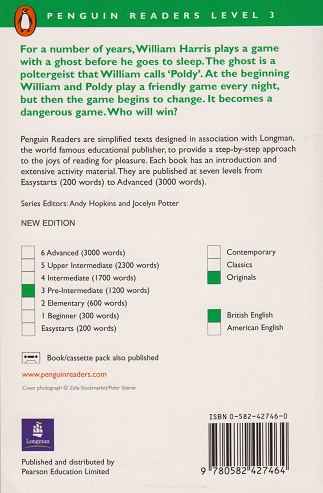
(10962)
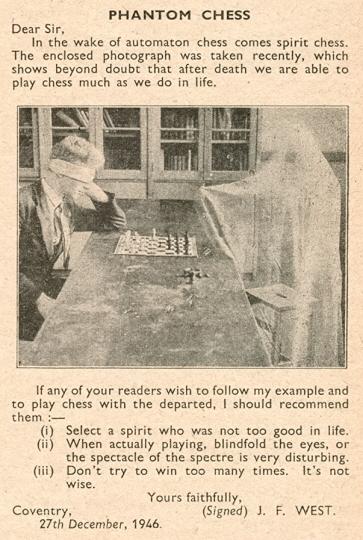
CHESS, February 1947, page 145
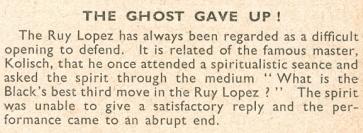
CHESS, February 1948, page 129.
(7006)
From pages 35-36 of CHESS, December 1942 (where Kersch should read Kersh):
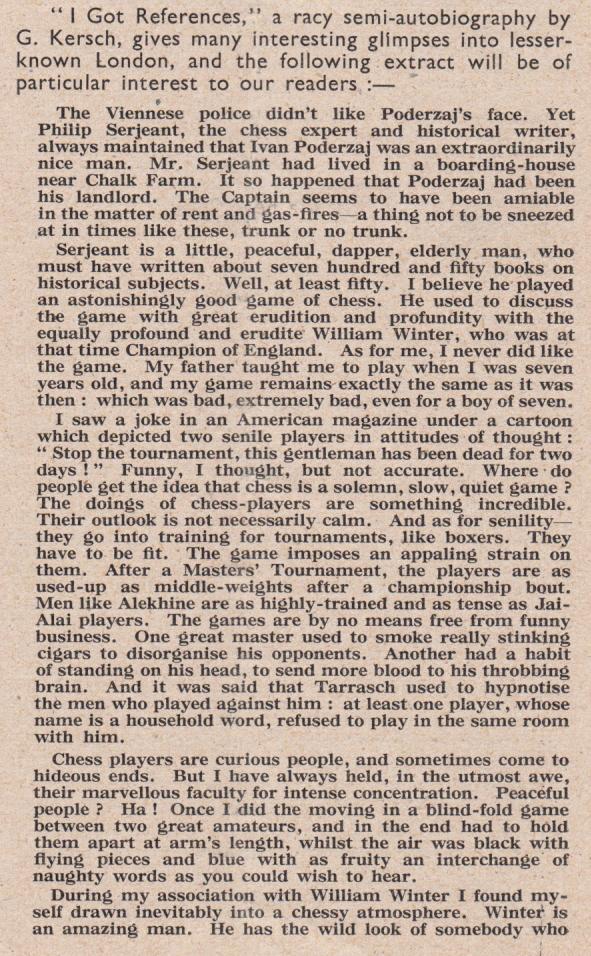
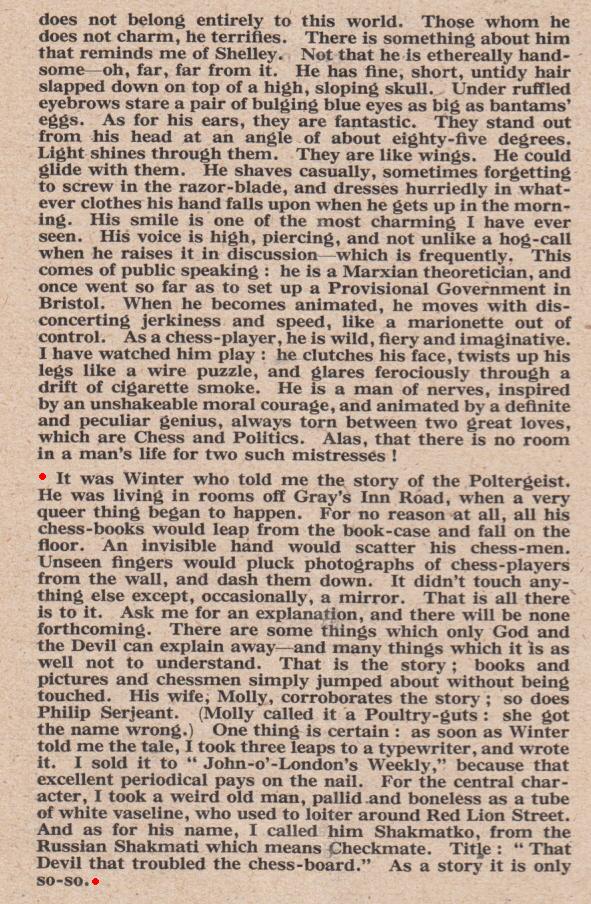
If a reader has I Got References by Gerald Kersh, we shall be grateful to know whether it contains any other chess-related material.
(7477)
The frontispiece of the final (December 1899) issue of the American Chess Magazine:
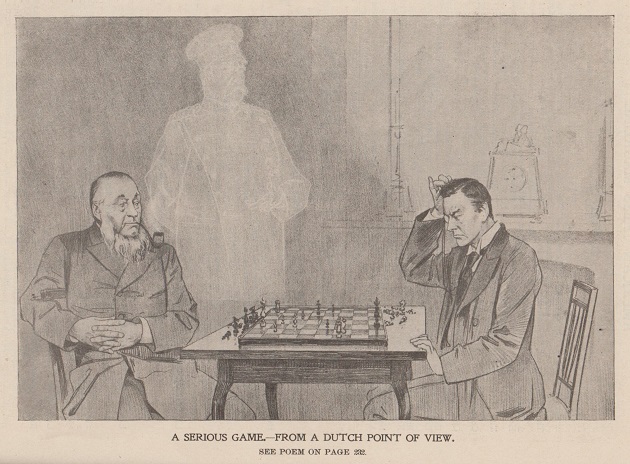
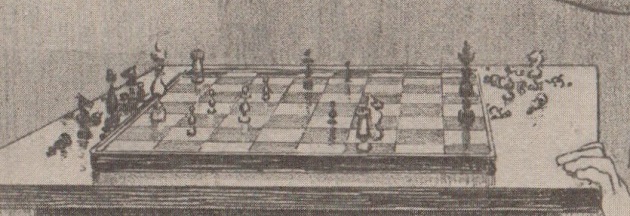
The poem by Jocelyn Johnstone on page 232:
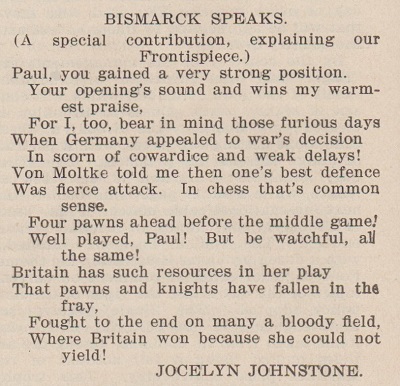
In the cartoon, which concerned the Boer War, the late Otto von Bismarck is standing, and the chess game is between Paul Kruger (the President of the South African Republic) and Joseph Chamberlain (the British Secretary of State for the Colonies).
(10391)
From page 209 of Chess Review, July 1959:
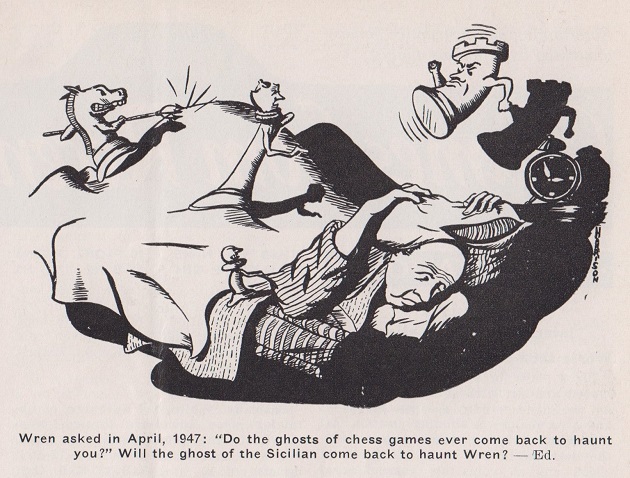
Page 275 of the Whitsun 1963 CHESS had this photograph from Alfredo Lejarza:

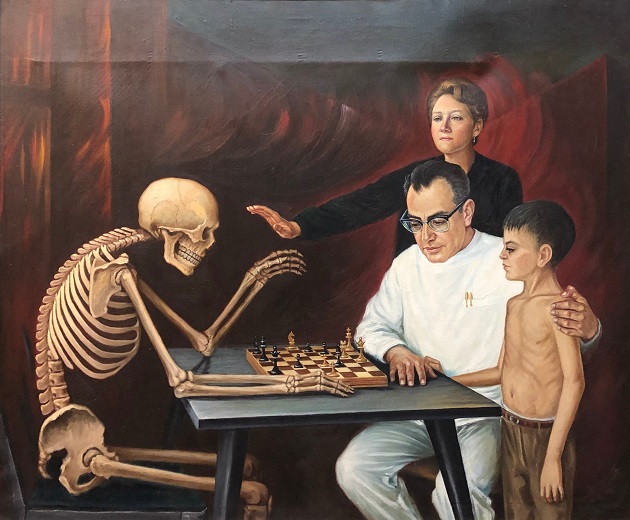
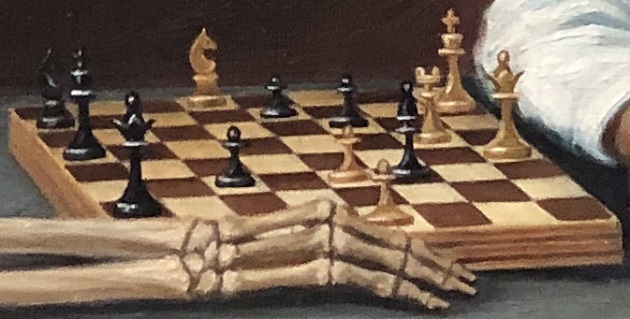
Olivia Segura Ortiz (Mexico City) has sent us this photograph of a painting commissioned by her grandfather, Dr Alfredo Lejarza, to depict his fight for the life of a dangerously ill boy in a game of chess against Death. Our correspondent’s grandmother is calling on Death to stop and to allow the boy to live.
This information corrects what appeared on page 275 of the Whitsun 1963 CHESS. (See above.)
To the Chess Notes main page.
To the Archives for other feature articles.
Copyright: Edward Winter. All rights reserved.